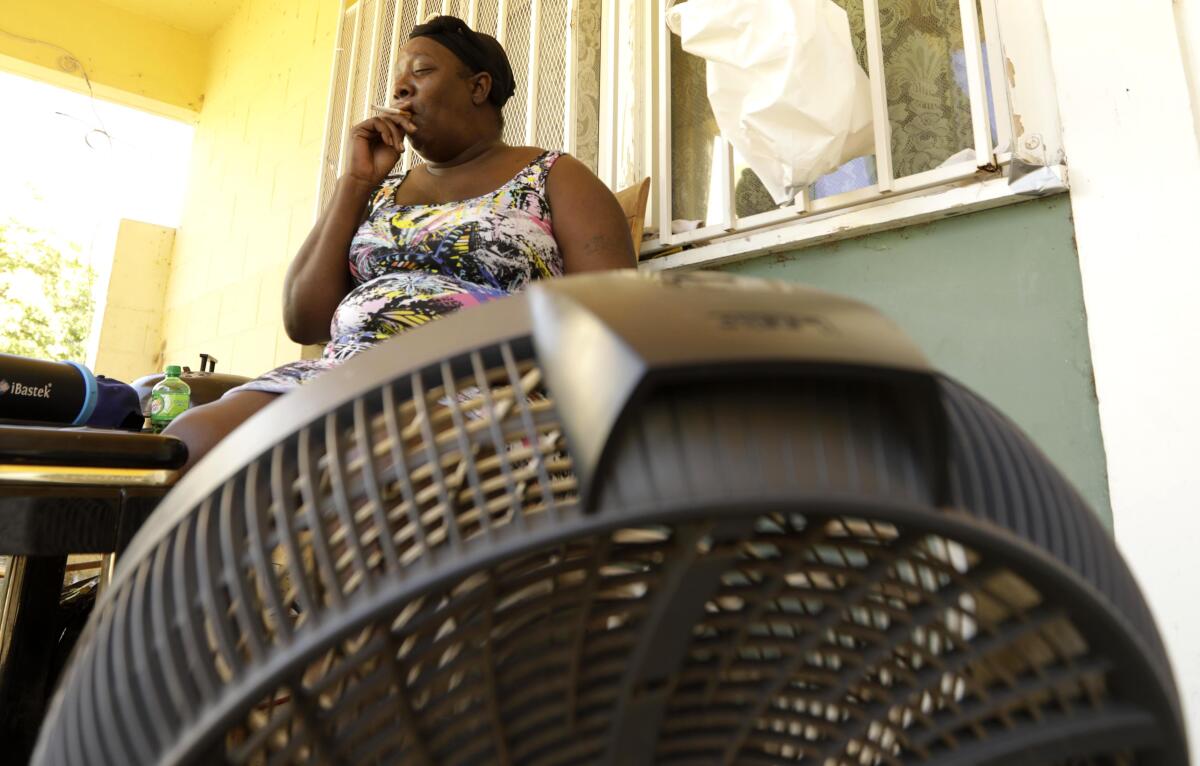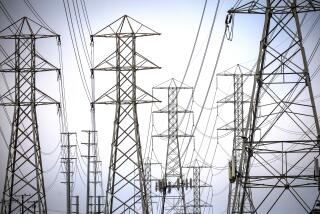As Earth warms, air conditioning use could exceed power supply in next decade

As climate change pushes temperatures ever higher, Californians could lose air conditioning for roughly one week each summer because the demand for cooling will have exceeded the capacity of the electrical grid, a new study has found.
Absent any improvement to the power infrastructure or the efficiency of air conditioners, researchers say the state could hit this sweltering mark by the early 2030s, when global average temperature is predicted to rise 1.5 degrees Celsius above pre-industrial levels.
If that happens, residents can expect more rolling blackouts like those seen during the punishing heatwave of August 2020, or even prolonged outages like the ones that followed severe winter storms that hit Texas in February 2021, according to the authors of the study, which appeared in Earth’s Future, a publication of the American Geophysical Union.
The researchers projected an even bigger increase in air conditioner-less days in some Southern and Midwestern states. Researchers predicted an average of 13.9 days for Missouri and 13.5 days for Illinois.
Utilities have funds available to install air conditioning in low-income households, but for one California family, help did not come soon enough.
“I really hope that from a citizen perspective, people will take the study and recognize that there are local impacts to climate change,” said lead author Renee Obringer, an environmental engineer at Penn State University. “Whether you’re living in Florida or Washington or Ohio, it will affect you personally, individually.”
Statewide, Californians can expect an average of 6.8 days per year when air conditioning is not available under this scenario, she said. The figure is an aggregate that reflects both the cooler northern reaches of the state and the warmer, more arid southern portions, she said.
“If we could go in and break the state apart into different climate zones or regions, we might see that in L.A., for example, there might be a higher number of days without air conditioning than in San Francisco,” Obringer said.
A spike in heat-driven blackouts will likely result in increased mortality, with the effects landing more heavily on vulnerable communities, including those who are poorer, older and nonwhite, the authors said.
Read all of our coverage about how California is neglecting the climate threat posed by extreme heat.
The findings are in line with a Los Angeles Times investigation that revealed that extreme heat likely caused 3,900 deaths in California over the previous decade — six times the state’s official tally — and that the undercounting has contributed to a lack of urgency in confronting the crisis. The effects of these worsening heat waves fall disproportionately on the poor and communities of color, the series found.
“It’s a pretty clear warning to all of us that we can’t keep doing what we are doing or our energy system will break down in the next few decades, simply because of the summertime air conditioning,” read a statement from Susanne Benz, a geographer and climate scientist at Dalhousie University in Halifax, Nova Scotia. Benz was not involved in the study.
Research has shown that marginalized communities often experience more intense temperature extremes due to the way housing is constructed, and they are more likely to have comorbidities that can aggravate these inequities due to increased exposure to pollution and environmental contaminants, Obringer said.
“All of these things come together to ultimately mean that our most vulnerable people are hit first, and often that’s not any choice that they have been able to make,” she said. “It’s just how our cities have ultimately been designed that has led to these extreme vulnerabilities.”
In a worst-case emissions scenario, half of the valley’s eight counties will have average annual maximum temperatures over 80 degrees by 2100.
The study rattled 51-year-old Myrna Rivas. She knows all too well the stress and anxiety that come with power outages.
Rivas lives at a mobile home park in an area of Riverside County where power outages are common during the summer. The outages, she said, have lasted anywhere from a few hours to at least three days in recent years.
She said those are stressful times for her. She worries about the food spoiling in the fridge. But above all, she worries about her 86-year-old mother whose bed and medical equipment need power.
“Everything that helps her breathe and eat runs on electricity,” Rivas said. “I would have to either visit my sister or rent a hotel so that I have access to electricity if it were to go out for a week.”
She said the only silver lining in all of this is that her mother may not live long enough to experience such extended outages.
Across the United States, the researchers projected an 8% increase in summer air conditioning demand with 1.5 degrees Celsius, or 2.7 degrees Fahrenheit, of warming. If global average temperature increases 2 degrees Celsius, or 3.6 degrees Fahrenheit, above pre-industrial levels — which will likely happen by the end of the century if measures aren’t taken to stop warming — demand would jump even more dramatically to 13% nationwide, they found.
“I was surprised at the difference between the 1.5- and the 2-degree temperature thresholds, particularly in the Midwest,” Obringer said. “We’re seeing potentially a tripling in how much more air conditioning we would use even just between a half degree.”
For example, in Indiana and Ohio, the researchers projected a 4% increase in demand with 1.5 degrees Celsius of warming. At 2 degrees Celsius, that would rise to 12%, she noted.
“It really emphasizes the importance of maintaining a lower temperature threshold if possible,” Obringer said.
The study also looked at how much each state would need to improve home air conditioning efficiency in order to counterbalance the demand from rising temperatures. California fared well by this metric and would require only a 0.7% increase in efficiency to adapt to a 2-degree rise without increasing demand, they found. By comparison, Arkansas, Louisiana and Oklahoma would require a 7.8% increase in efficiency.
California, which requires that new developments have energy efficient air conditioners and some older buildings be retrofitted with them, is leading the country when it comes to these requirements, Obringer said.
“It does show it is possible to improve air conditioner efficiency and to regulate that and encourage it through policy,” she said. “Whether other states will adopt that is a different story.”
It’s also possible that states could build up electrical capacity to avoid disruptions, she said.
“What we are hoping with our research is that if we can model what might need to happen, then we can start to put some safeguards in place so we are able to generate electricity at this higher demand, whether that’s through increasing storage or expanding solar and wind or just looking at what we can do to improve our use or even encouraging conservation,” she said.
More to Read
Sign up for Essential California
The most important California stories and recommendations in your inbox every morning.
You may occasionally receive promotional content from the Los Angeles Times.















